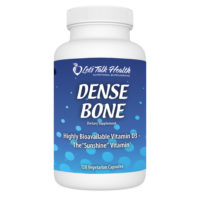A little time in the sun can do more than just give you a tan; it may help reduce your blood pressure. The incidence of hypertension and cardiovascular disease correlates with latitude and increases during winter, and researchers from the University of Edinburgh set out to find out why. They hypothesized that the seasonal and latitudinal associations with hypertension could be related to the effects of the sun’s UV radiation on nitric oxide (NO) in the skin, in light of the fact that NO metabolites are abundant in human skin. In the body, NO typically has a vasodilating effect, facilitating blood flow and reducing blood pressure.
In 24 healthy volunteers, irradiation of the skin with UVA lowered blood pressure with decreases in circulating NO and increases in NO metabolites. Dietary interventions to increase circulating NO had no effect on these UVA-induced changes, which suggests that the blood pressure reduction was the result of activity of NO stored in the skin, rather than direct utilization of circulating NO. The study authors concluded that “our data provide mechanistic insights into an important function of the skin in modulating systemic NO bioavailability which may account for the latitudinal and seasonal variations of BP and cardiovascular disease.”
Vitamin D is essential to your health. It has been proven to provide the body with the following health benefits:
- Bone Health
- Diabetes prevention
- Heart health and prevention of early death due to heart attack
- Decreased risk of cancer
- Lower blood pressure
Yet, you are probably not getting as much vitamin D as you should. You have been taught since childhood that all you have to do is let a little sunshine fall on your skin and your body will make its own supply. Unfortunately, this isn’t always the case.
Why sunlight alone won’t work
- Not enough sun. During the winter months, the sun is too low on the horizon in the sky too few hours.
- The sun is blocked. This is true especially in the winter when people wear more clothing. However, even in the summer, when people wear fewer clothes, sunscreen can block the UV rays necessary for vitamin D stimulation.
- Lifestyle. People simply spend more time indoors these days. Even if you sit by a window, regular glass will block UV rays.
- Obesity. A recent study found that there is a link between obesity and lower levels of circulating vitamin D. If you are one of the more than 30% of U.S. adults who are obese, you have another cause to worry about whether or not you are getting enough vitamin D.
Vitamin D has been the focus of a lot of research lately. As more and more studies are published, it’s becoming increasingly clear that “the sunshine vitamin” has a broad range of influences on human health, and that maintaining adequate vitamin D levels is crucial to our well being.
Despite the overwhelming emerging science that has brought Vitamin D to the forefront of nutritional health – a whopping 77% of the population is lacking in sufficient Vitamin D.
Vitamin D – and specifically, bioavailable D3 from cholecalciferol (the type found in Dense Bone) is critical for the absorption of bone-boosting minerals such as calcium, phosphorous and magnesium.
What you may not know is that ample Vitamin D in also a non-negotiable requirement for healthy immune function, balanced blood pressure levels, optimal insulin sensitivity and balanced blood sugar metabolism, healthy normal cell division, premenstrual comfort and a healthy and sanguine mood.



